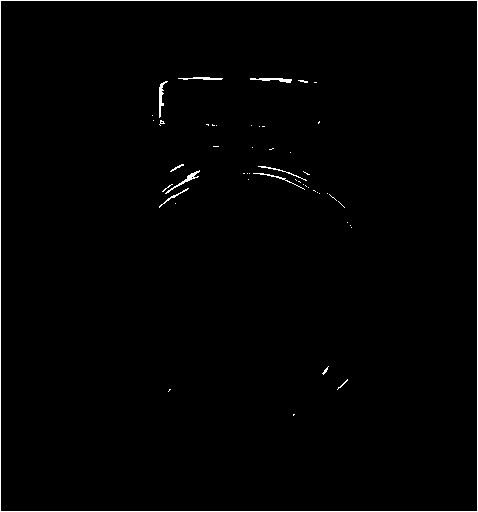Method for preparing metal doped TiO2 nanocrystal particles
A nanocrystalline particle, metal doping technology, applied in chemical instruments and methods, metal/metal oxide/metal hydroxide catalysts, physical/chemical process catalysts, etc., can solve the problem of high photogenerated carrier recombination rate and effective The problems of less utilization and low quantum efficiency can achieve the effect of good suspension performance, relatively low production cost and high photocatalytic efficiency
- Summary
- Abstract
- Description
- Claims
- Application Information
AI Technical Summary
Problems solved by technology
Method used
Image
Examples
Embodiment 1
[0047] Under stirring conditions, 2.5 grams of titanium sulfate were dispersed and dissolved in 100 milliliters of copper chloride aqueous solution with a copper ion concentration of 0.1%. Slowly add tetramethylammonium hydroxide with a concentration of 0.1 moles per liter to the above solution until the solution is neutral (pH value is about 7), so that titanium sulfate is gradually hydrolyzed to form copper ion-doped hydrated titanic acid precipitate. The hydrated titanic acid precipitate doped with copper ions was ultrasonically dispersed, washed with deionized water several times, and centrifuged. Next, prepare 200 milliliters of hydrogen peroxide volume fractions and be the hydrogen peroxide aqueous solution of 3%. Subsequently, ultrasonically disperse the above-mentioned washed copper ion-doped hydrated titanic acid precipitate in the above-mentioned hydrogen peroxide aqueous solution with a hydrogen peroxide volume fraction of 3%, and after stirring for 1 hour, hydrothe...
Embodiment 2
[0049] Under the condition of stirring, 2.5 g of titanyl sulfate was dispersed and dissolved in 100 ml of ferric nitrate aqueous solution with an iron ion concentration of 0.5%. Slowly add ammonia water with a concentration of 0.2 moles per liter into the above solution until the solution is neutral (pH value is about 7), so that titanyl sulfate is gradually hydrolyzed to form iron ion-doped hydrated titanic acid precipitates. The hydrated titanic acid precipitate doped with iron ions was ultrasonically dispersed, washed with deionized water several times, and centrifuged. Next, prepare 200 milliliters of hydrogen peroxide volume fractions and be the hydrogen peroxide aqueous solution of 5%. Subsequently, ultrasonically disperse the washed iron ion-doped hydrated titanic acid precipitate in the hydrogen peroxide aqueous solution with a hydrogen peroxide volume fraction of 5% and stir for 2 hours, then hydrothermally react at 100 degrees Celsius for 8 hours to obtain Figure 4...
Embodiment 3
[0051] Under the condition of stirring, 3 milliliters of titanium tetrachloride were dispersed and dissolved in 100 milliliters of chloroplatinic acid aqueous solution with a platinum ion concentration of 0.2%. Slowly add tetrabutylammonium hydroxide with a concentration of 0.1 mole per liter into the above solution until the solution is neutral (pH value is about 7), so that titanium tetrachloride is gradually hydrolyzed to form platinum ion-doped hydrated titanic acid precipitate. The hydrated titanic acid precipitate doped with platinum ions was ultrasonically dispersed, washed several times with deionized water, and centrifuged. Secondly, prepare 200 milliliters of hydrogen peroxide aqueous solution that the volume fraction of hydrogen peroxide is 2%. Subsequently, the above-mentioned washed platinum ion-doped hydrated titanic acid precipitate was ultrasonically dispersed in the above-mentioned hydrogen peroxide aqueous solution with a hydrogen peroxide volume fraction of ...
PUM
| Property | Measurement | Unit |
|---|---|---|
| particle diameter | aaaaa | aaaaa |
| particle diameter | aaaaa | aaaaa |
Abstract
Description
Claims
Application Information
 Login to View More
Login to View More - R&D
- Intellectual Property
- Life Sciences
- Materials
- Tech Scout
- Unparalleled Data Quality
- Higher Quality Content
- 60% Fewer Hallucinations
Browse by: Latest US Patents, China's latest patents, Technical Efficacy Thesaurus, Application Domain, Technology Topic, Popular Technical Reports.
© 2025 PatSnap. All rights reserved.Legal|Privacy policy|Modern Slavery Act Transparency Statement|Sitemap|About US| Contact US: help@patsnap.com



